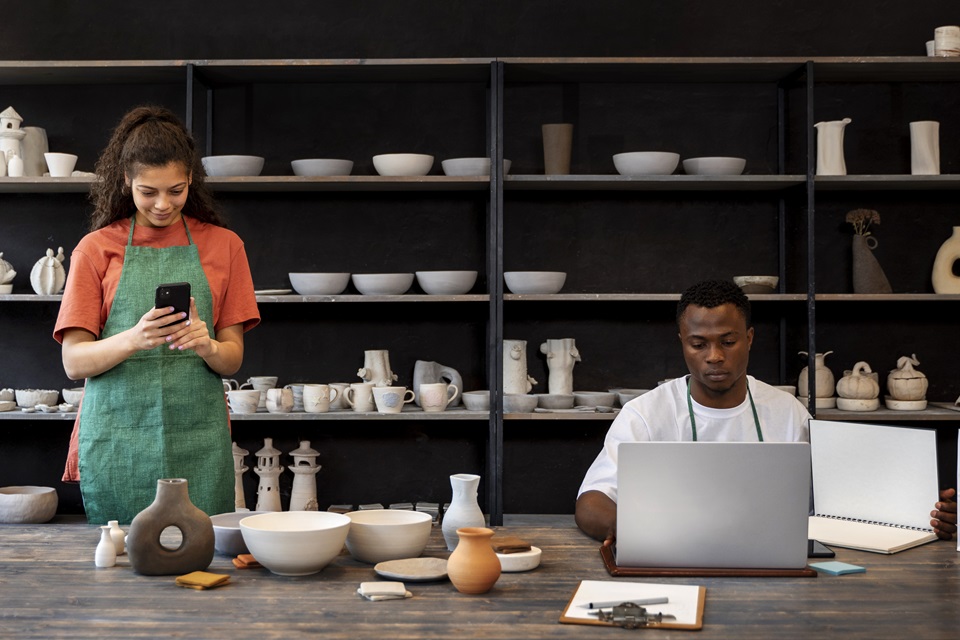Pottery flipping, the art of buying, valuing, and reselling ceramic collectibles, is a niche yet potentially lucrative business venture. It requires a keen eye for quality, an understanding of historical and aesthetic value, and a sense of market trends. This 1500-word article delves into the world of pottery flipping, guiding you through the intricacies of identifying, valuing, and selling pottery for a profit. For further enhancement of your flipping strategies, incorporating flipping business tips can be an invaluable asset.
Table of Contents
The Allure Of Pottery
Pottery, an ancient art form, holds a special place in the world of collectibles. From functional kitchenware to decorative pieces, pottery spans a wide range of styles, periods, and cultures. Each piece tells a story, whether it’s a rustic stoneware jug or a finely painted porcelain vase. The allure lies in the craftsmanship, the history, and often, the story of the artist behind it.
Understanding The Pottery Market
The market for pottery is diverse, encompassing everything from antique porcelain to modern studio ceramics. To be successful in pottery flipping, it’s crucial to understand the different types of pottery, the key periods in ceramic history, and what collectors are currently seeking. This market is driven by aesthetics, condition, rarity, and historical significance.
Sourcing Pottery
Finding pottery to flip involves scouring a variety of sources. Antique shops, estate sales, thrift stores, online marketplaces, and auctions are fertile grounds for discovering undervalued pieces. Networking with other collectors, joining ceramic-focused groups, and attending pottery fairs can also yield valuable finds.
Evaluating Pottery
The evaluation process is critical in pottery flipping. Factors to consider include the maker, age, condition, rarity, and artistic merit. Marks and signatures can be key indicators of a piece’s origin and authenticity. Researching these marks, understanding pottery styles, and being aware of current market trends are essential for accurate valuation.
Restoration & Conservation
Some pottery pieces may require restoration or conservation. It’s important to approach this carefully, as improper restoration can diminish a piece’s value. Sometimes, preserving the original condition, including any wear or damage, is preferable. For significant restoration work, consulting with a professional conservator is advisable.
Pricing Strategies
Setting the right price is a delicate balance between the piece’s intrinsic value and the current market demand. Pricing should take into account the purchase cost, any restoration expenses, and the potential market value. Keep in mind that overpricing can deter potential buyers, while underpricing can result in profit loss.
Marketing & Selling
Selling pottery effectively requires targeted marketing. Online platforms like eBay, Etsy, and specialized antique marketplaces are popular for selling pottery. High-quality photographs, detailed descriptions, and storytelling can enhance the appeal of your listings. Emphasizing a piece’s uniqueness, history, or the reputation of its maker can attract collectors and enthusiasts.
The Role Of Provenance
Provenance, or the history of ownership, can significantly increase a piece’s value. Pottery with a well-documented history, especially if it’s been owned by notable individuals or featured in important collections, is often more desirable. Maintain and provide any documentation or provenance that accompanies your pottery pieces.
Legal & Ethical Considerations
Ensure that your pottery flipping practices are legal and ethical. This includes being transparent about the condition and authenticity of the pieces, avoiding the sale of counterfeit items, and adhering to any relevant trade regulations.
Building A Niche
Developing a niche can be advantageous in the pottery market. You might specialize in a specific type of pottery, such as Art Deco ceramics, Japanese porcelain, or American studio pottery. Specialization allows you to build expertise and reputation in a specific area, making it easier to source and sell pieces.
Understanding Your Audience
Knowing your target market is key. Different types of pottery appeal to different demographics. Some collectors might be interested in historical pieces, while others may be drawn to contemporary studio pottery. Tailoring your inventory and sales approach to your audience can enhance your success.
Utilizing Online Resources
Leveraging online resources for research and sales is crucial. Websites offeringflipping business tips can provide valuable insights into market trends, pricing strategies, and selling techniques. Additionally, online forums and social media platforms can be useful for networking and marketing.
Trends & Market Dynamics
The pottery market can be influenced by changing trends and tastes. Staying informed about popular styles, emerging artists, and shifts in collector interests is important. This involves continuous research, attending exhibitions, and engaging with the pottery community.
Risk Management
Managing risks is part of the flipping business. The market can be unpredictable, and tastes can change. Diversifying your portfolio and not over-investing in a single piece can help mitigate these risks. Setting aside a contingency fund for unexpected expenses is also prudent.
Conclusion
Pottery flipping is a blend of art appreciation, historical knowledge, and business acumen. It requires an understanding of the pottery market, a talent for sourcing and evaluating pieces, and the ability to effectively market and sell them. While it can be challenging, it is also immensely rewarding, offering the opportunity to work with beautiful and historically significant objects.
Incorporating insights from resources like flipping business tips can enhance your understanding of the market and refine your strategies. With dedication, research, and a passion for pottery, flipping ceramic collectibles can be a profitable and enriching venture, connecting you with the rich history and timeless beauty of ceramic art.



